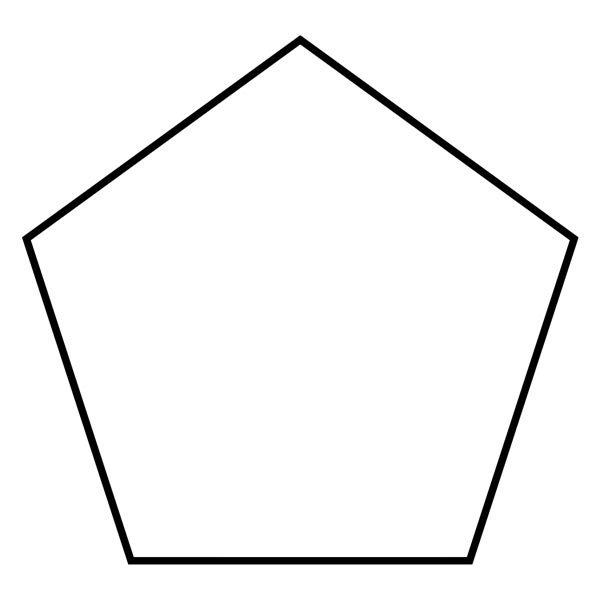A pentagon is a geometric shape with five sides and five angles. In a regular pentagon, all sides are of equal length and all angles are equal, each measuring 108 degrees. Pentagons can be found in various contexts, from architecture and design to natural forms. In addition to regular pentagons, there are also irregular pentagons, where the sides and angles may not be equal.
The study of pentagons falls under the broader field of geometry, which explores the properties and relations of points, lines, surfaces, and solids. In geometry, students work with a lot of different shapes. One of the most important polygons to become familiar with is the pentagon.

7 Things You Might Not Know About Pentagons
- All pentagons have five straight sides, but the sides do not have to be of equal length.
- A regular pentagon has five equal sides and five equal angles. In basic geometry, most problems will involve regular polygons.
- Each interior angle of a regular pentagon = 108 degrees.
- Each exterior angle of a regular pentagon = 72 degrees.
- The sum of the interior angles of a regular pentagon = 540 degrees.
- Drawing diagonal lines between the points of pentagon will result in a perfect star shape or pentagram.
- If the five sides of a shape are NOT connected or the shape has a curved side(s), it is NOT a pentagon.
Types of Pentagons
- Regular or equilateral pentagon: five equal sides and angles
- Irregular pentagon: five unequal sides and unequal angles
- Convex pentagon: no internal angle can be greater than 180 degrees
- Concave pentagon: has an internal angle greater than 180 degrees causing two sides to “sink in” like a “cave”
Parts of a Pentagon
- Side: one of the five line segments
- Vertex: two sides meet at a point called a vertex
- Diagonal: a line that connects two vertices that isn’t one of the five sides
- Interior angle: an inside angle formed by two sides of the pentagon
- Exterior angle: an angle on the outside of the pentagon formed by two adjacent sides
How to Calculate the Area of a Pentagon
- Start with one side and the apothem*
- Divide the pentagon into 5 triangles by drawing 5 lines from the center of the pentagon
- Calculate the area of a triangle**
- Multiply by 5 to find the total area
*The apothem is the line from the center of the pentagon to a side, intersecting the side at a 90º right angle.
**Remember the formula for calculating the area of a triangle is ½ x base x height
Pentagons – A Few Fun Facts
Why the Pentagon is a pentagon: The headquarters of the U.S. Dept. of Defense in Washington, DC is named the Pentagon. This massive concrete and steel building has a total floor area of almost 7 million square feet and 17.5 miles of corridors. At the beginning of WWII in 1941, President Roosevelt decided a new building was needed for the War Dept.
The architect chose to take advantage of the properties of a symmetrical pentagon. Doing so shortened the distance people would have to walk from one office to another within this huge building when compared to a traditional rectangular building. A circular building would have also incorporated shorter walking distances, but constructing a building with straight sides such as a pentagon was much easier and faster.
Okra: Next time you’re eating fried okra or gumbo, take a look at a slice of okra. It’s shaped like a pentagon.
Starfish: Almost all starfish have a fivefold radial symmetry or are shaped like pentagons.
Poetry: There is actually something known as pentagon poetry.
Musical Pentagons: If you like music from the 1980s, check out Rich Clare’s Pentagon Band. For something different, South Korea has a boy band named Pentagon.
As you can see, a pentagon is a very useful shape. Not only is a pentagon frequently used in basic geometry, it is a shape useful in architecture and found throughout the natural world.